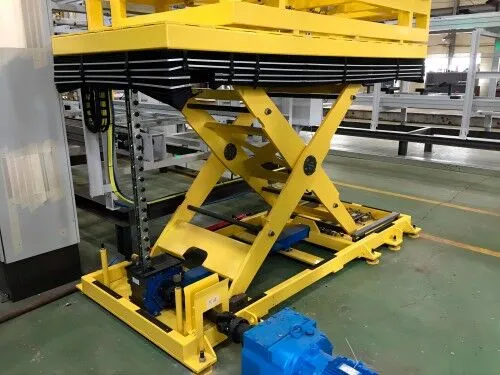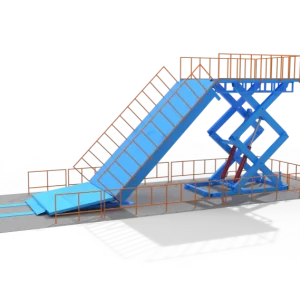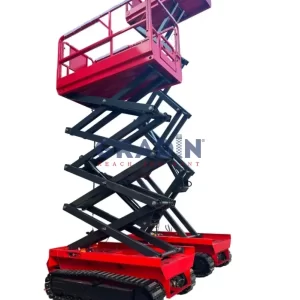How to Use a Scissor Lift Safely
Home > Scissor Lift > How to Use a Scissor Lift Safely
FAQ
Tags
4 Posts (1) Articulating Staircase (1) Automated (2) Automation (1) Battery Electric (2) Boom Lift (4) Compact Design (1) Diesel (1) Double Chain (1) Durability (2) Easy to use (1) Efficient Actuation (1) Explosion-Proof (1) Fast Installation (1) Fixed (3) Guide Rail (3) Heavy Duty (3) High-Strength (4) Hydraulic (20) Hydraulic Iris Opening (1) Industrial Elevators (1) inspect (2) Logistics Equipment (1) Logistics Solutions (1) Maintenance Friendly (1) MEZZANINE (1) Mobile (1) Modular Design (2) Outdoor Lift (1) Production Line Solutions (1) Rigid Chain (1) Roller Chains (2) Safety (5) scissor lift (9) Self Propelled (3) Semi-Auto (1) Small (3) Stainless (1) Track-Mounted (1) Tracked (1) Vertical Lift (1) Vertical Transport (1) VRC (1) Warehouse Solutions (2) Weather Resistance (1)
How to Use a Scissor Lift Safely
Using a scissor lift safely is essential to prevent accidents and ensure a secure working environment. Here are key guidelines to follow:
1. Pre-Operation Checks
- Inspect the Equipment: Before use, conduct a thorough pre-operation inspection. Check for:
- Hydraulic leaks
- Functional safety features (guardrails, emergency stop)
- Tire condition and inflation
- Battery charge levels
- Read the Manual: Familiarize yourself with the operator’s manual specific to the lift model.
2. Site Assessment
- Check the Work Area: Ensure the ground is stable and level. Avoid using the lift on slopes or uneven surfaces.
- Clear Obstacles: Remove any hazards, such as debris or overhead obstructions, from the work area.
3. Proper Setup
- Positioning: Place the lift on a flat surface and ensure stabilizers (if equipped) are deployed.
- Secure the Area: Use cones or barriers to keep unauthorized personnel away from the lift’s operating area.
4. Using the Lift
- Follow Weight Limits: Do not exceed the lift’s rated load capacity, including the weight of personnel and tools.
- Wear Safety Gear: Always wear appropriate personal protective equipment (PPE), such as a hard hat and harness if required.
- Secure Tools and Materials: Use tool belts or lanyards to secure tools to prevent them from falling.
5. During Operation
- Maintain Stability: Keep your body within the guardrails at all times. Avoid leaning over the edge.
- Use Controls Properly: Operate the lift using the manufacturer’s guidelines. Avoid sudden movements.
- Communicate: If working with a team, establish clear communication signals to coordinate movements.
6. Post-Operation Procedures
- Lower the Lift: After use, lower the lift completely and turn off the power.
- Secure the Area: Ensure the lift is parked safely and secured when not in use.
Conclusion
By following these safety guidelines, operators can effectively minimize risks associated with using scissor lifts. Regular training and adherence to safety protocols are essential for maintaining a safe working environment.
Top Rated Products
-
Loading Ramp With Scissor Lift
READ MORE2 – 3 ton
30˚ – 45˚
W : > 6 mL : > 11 m -
G-GTJZ16RT 16-meter Diesel Scissor Lift
READ MORE≤ 1 ton
> 11 m
W : 1 – 2 mL : 3 – 5 m -
G-GTJZ13RT 13-meter Diesel Scissor Lift
READ MORE≤ 1 ton
> 11 m
W : 1 – 2 mL : 3 – 5 m -
G-GTJZ10RT 10-meter Diesel Scissor Lift
READ MORE≤ 1 ton
9 – 11 m
W : 1 – 2 mL : 3 – 5 m -
CFPT1214LD 10m Tracked Scissor Lift
READ MORE≤ 1 ton
9 – 11 m
W : 1 – 2 mL : 1 – 3 m
Contact with our experts, or request a quote now.




